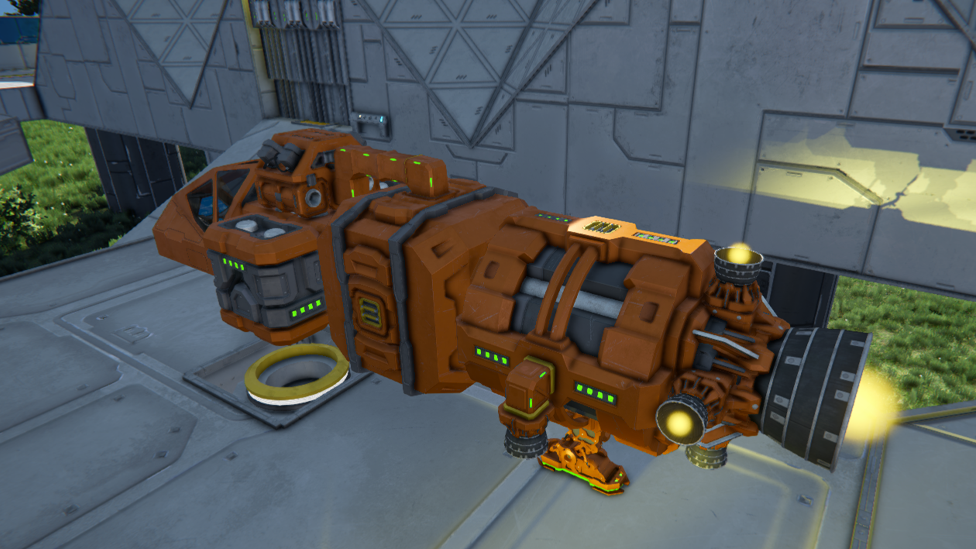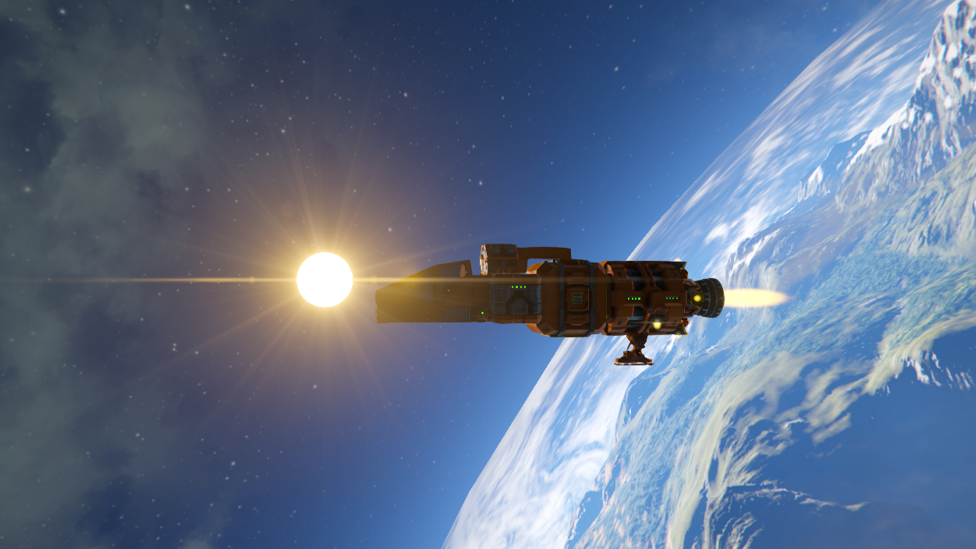Space Engineers: How to Get Off Planet
But first, you must learn how to make Space Engineers server to run the game. Continue reading if you’ve already done so!
1. Build a Ship

Make Your Own Space Engineers Server
The first mission is to construct a spaceship capable of space travel. Assemble a spacecraft fitted with all necessary components, such as thrusters, a pilot's cockpit, a power source (batteries, reactors, or solar panels), and enough room for supplies and materials. The spacecraft should be trustworthy, strong, and designed to survive the challenges of space travel.
2. Gather Resources
Gather the resources required for space travel before you may leave the planet. To gather resources such as iron, nickel, silicon, and uranium, you can either explore the planet's surface or mine underground. To effectively harvest these resources, use a hand drill or a sizable drill ship. Make sure you have a sufficient quantity of raw materials to refine and process in order to build the components and fuel for your voyage.
3. Refine and Process Resources
Utilize an onboard refinery to transform the raw materials into usable materials. Create ingots from the raw ore so that you can use them to build parts and fuel your ship. Make sure you have enough refined materials on hand to support the building and upkeep of your ship while traveling through space.4. Assemble and Equip the Ship
Build the required parts and update the ship's systems using the onboard assembler. Install more stabilizing gyroscopes, navigational devices, and thrusters. Install life support systems and other vital survival gear on the ship, such as oxygen and hydrogen tanks. For the difficulties of space travel, make sure your ship is well-equipped.
5. Check Power and Fuel
Make sure your ship has enough power to take off and maintain flight before departing the planet. Fill the reactors with fuel or refuel the ship's batteries. Ensure that there is enough fuel to sustain the spacecraft's engines throughout the journey. This might be hydrogen or uranium, depending on the design of your ship. Check your fuel supplies again to make sure you have enough.
6. Test the Ship

Test your ship's stability and maneuverability before attempting a planetary launch. Check if the ship handles smoothly and can resist the effects of planetary gravity by taking it for a brief test flight close to the planet's surface. Check the controls, thrusters, and stabilizing systems of the ship to ensure they are all operating properly.
7. Launch Preparation
Locate a place on the planet's surface that is open and free to launch. Make sure there are no structures or obstructions that could hamper your ascent. Align the ship's vertical position with the desired liftoff trajectory.8. Activate Thrusters
It is now time to turn on the ship's thrusters after preparing the launch site. Increase the throttle gradually until you have enough upward push to defy gravity. Applying too much thrust too rapidly could destabilize the ship or lead it to deviate off course, so take care not to do so. To achieve a smooth takeoff, increase the throttle gradually and smoothly.9. Ascend and Break Free
Keep your rise regulated and steady as you climb. To maintain a steady climb, keep an eye on your altitude and change the throttle as appropriate. Gain height steadily until you escape the planet's gravitational pull. Your effective exit from the planet's surface is now complete.10. Transition to Space
Once in space, adjust your spaceship's course to align it with your desired direction. This might be a moon, another planet, or an orbiting structure. Use your spaceship's interplanetary or interstellar thrusters to reach the speed required for space travel. Monitor your spaceship's systems, fuel levels, and trajectory throughout the journey, making any necessary adjustments to ensure a safe arrival at your destination.

FAQ
Can I leave a planet without building a ship in Space Engineers?
In Space Engineers, leaving a planet without first building a ship is indeed possible. Here are a few techniques:
- Use a jetpack: Players can use a jetpack to travel into space, however the fuel capacity of the jetpack places restrictions on this technique.
- Use hydrogen engines: Players can use hydrogen engines with enough fuel to leave a planet. Build a hybrid spacecraft: Players can construct a spacecraft with atmospheric engines for liftoff and hydrogen engines for space travel. Dock their ship with a connector to the main base, charge the battery to capacity, and launch.
- Utilize conveyors and conveyor tubes: inventories in space engineers operate collectively rather than individually. Any access panel on the same ship can view all connected inventory, but for products to be transferred, inventories need to be connected via conveyors and conveyor tubes.
Finally, players in Space Engineers have several options for leaving a planet without creating a ship, including using a jetpack, hybrid ships they have built, hydrogen engines, connectors, conveyors, and conveyor tubes.
Can I leave a planet without gathering resources in Space Engineers?
In Space Engineers, it is impossible to depart a planet without accumulating resources. Building a ship or a hybrid spacecraft with atmospheric engines for takeoff and hydrogen engines for space travel requires resources.
The only way to genuinely advance is to leave that planet as soon as possible because there are no resources there to support any kind of progress.
Can I leave a planet without using thrusters in Space Engineers?
In Space Engineers, leaving a planet is not feasible without employing thrusters. To leave the planet's surface and escape its gravity, thrusters are required. In Space Engineers, there are three different kinds of thrusters: atmospheric, ion-based, and hydrogen.
Small surveyors or scout ships are examples of vessels that are best suited for atmospheric thrusters. Keep them on the planetside because they lose a lot of efficiency in thin atmospheres or in space.
It takes hydrogen engines to escape a planet's gravity. Because there will come a time when neither set of engines is producing much push.
Takeaway
Keep in mind that departing a planet in Space Engineers involves meticulous planning, building, and execution. You can successfully depart the planet in Space Engineers by following these instructions and paying close attention to the little things.Make Your Own Space Engineers Server
Copyright 2019-2025 © ScalaCube - All Rights Reserved.